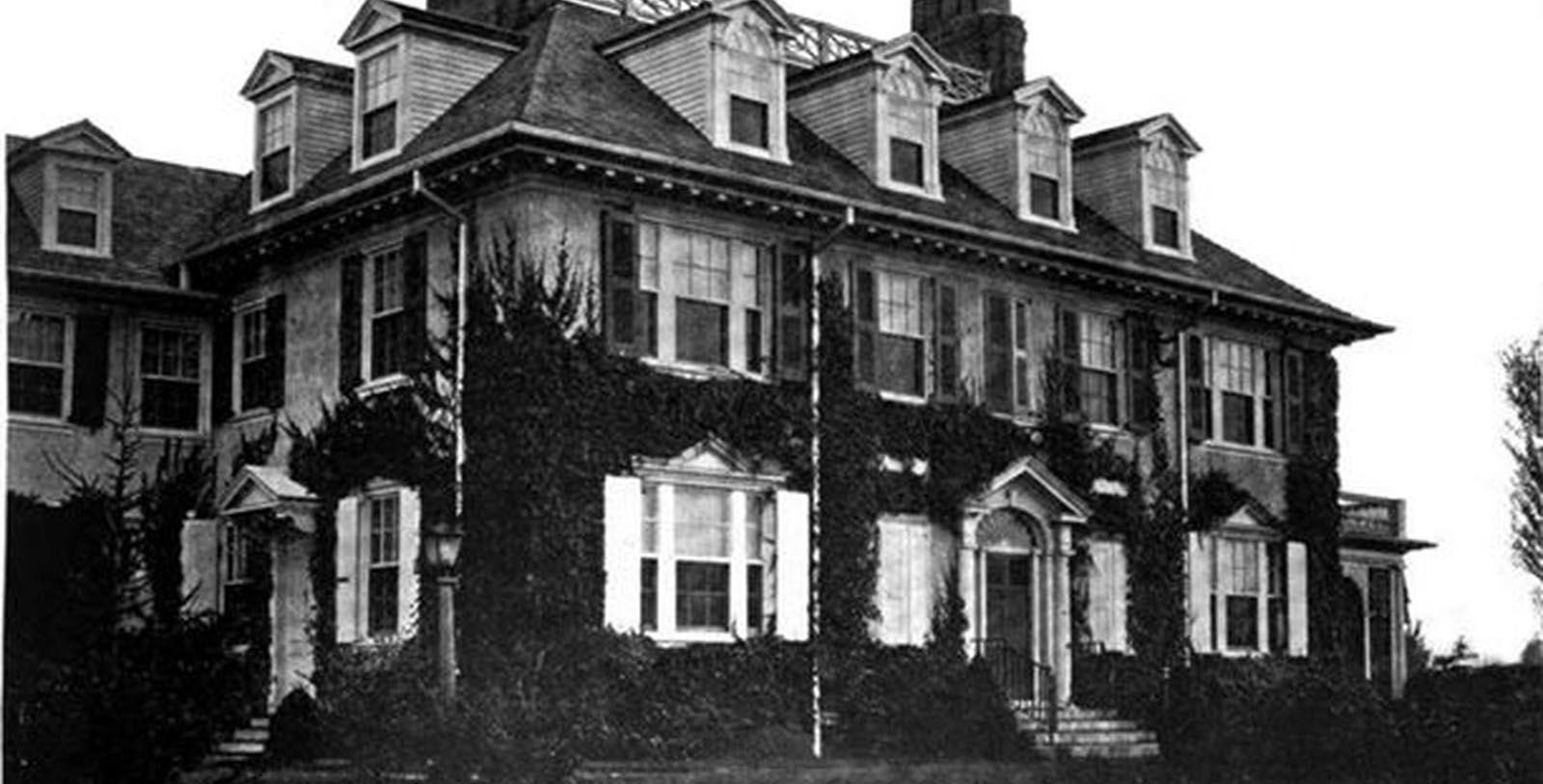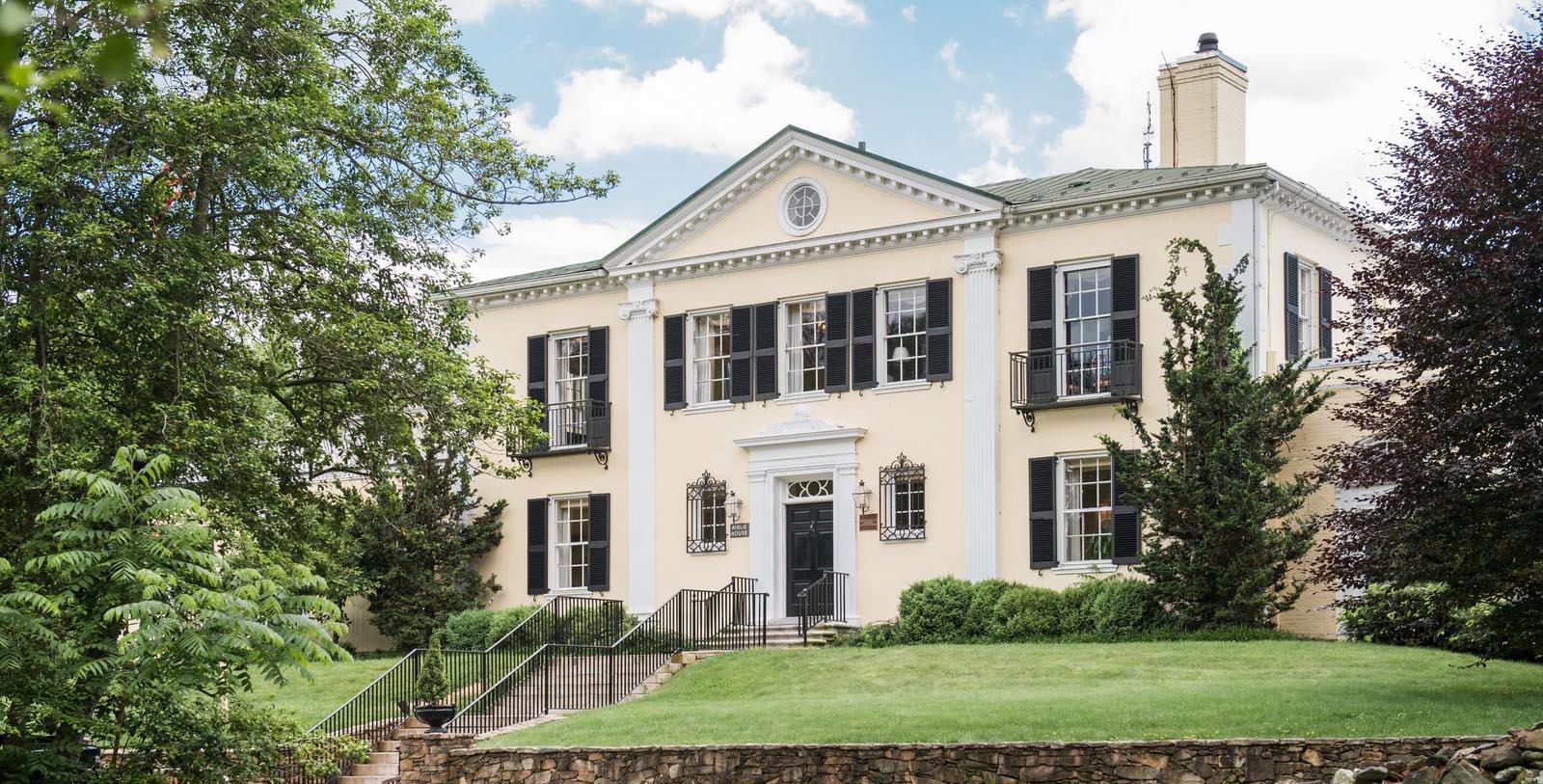Receive for Free - Discover & Explore eNewsletter monthly with advance notice of special offers, packages, and insider savings from 10% - 30% off Best Available Rates at selected hotels.
historic airlie hotel in virginia
Discover Airlie, a historic hotel in Virginia named after a castle in Scotland that became a safe zone for dialogue during the Civil Rights Movement.
A member of Historic Hotels of America since 2015, Airlie’s history dates back well over a century. While the current iteration of the building appeared in the mid-1950s, it was actually created by a prominent politician and socialite named Harry Connelly Groom at the height of the Gilded Age. Groom himself was fairly well connected due to his lengthy career in public service, having worked in the U.S. Customs Office under President Grover Cleveland. Originally from Philadelphia, he had once lived on a farm in Wythe County with his brother, John. Coming to adore the commonwealth, Groom eventually decided to move back permanently in the late 1890s. He eventually headed south toward Warrenton, where he purchased the rolling estate of Adeline H. Edmonds for the construction of a beautiful manor home. Work on Groom’s home began immediately thereafter and concluded in 1899. To honor his new marvelous residence, Groom christened it as the “Airlie House” after a brilliant castle he knew about in Scotland. The Airlie House was truly a sight to behold, impressing all visitors who stepped inside. Home and Garden Magazine even published an article that fawned over the mansion’s gorgeous Georgian Revival architecture, deeming it one of the most awe-inspiring structures in all of Virginia. But tragedy struck in the 1920s, when a structural accident caused significant damage throughout the building. Undeterred, Groom completely renovated the Airlie House, building it back to be stronger than ever. He spent the rest of his life in the Airlie House, too, ultimately passing away from illness in 1941.
Groom’s daughter, Susan Groom Harney, then inherited the Airlie House, although she later sold it to Edward H. Clapp. Clapp subsequently watched over Airlie for some time until his own death, with his family selling the manor to Dr. Murdoch Head in 1959. When Dr. Head purchased Airlie House, he proceeded to institute a series of comprehensive renovations that laid the foundation for the modern facility. He specifically entertained a vision of creating one of the first conference facilities of its kind in the country. He specifically yearned to make a place where individuals could meet in a neutral environment and openly exchange ideas on important matters of the day. Needless to say, the development of Dr. Head's vision was a success. In 1961, the newly created “Airlie Center” opened its doors before significant national acclaim. In fact, Life Magazine declared the facility to be an innovative and modern “Island of Thought.” Dr. Head initiated a variety of programs dedicated to education, as well as environmental research, public health, and social progress. He even established the Airlie Center as a safe zone for dialogue during the Civil Rights Movement, with the great Dr. Martin Luther King Jr. attending meetings on-site. Dr. Head's studio facilities based at Airlie Center—Airlie Productions—created hundreds of documentaries on the full spectrum of social and environmental issues, too. (The studio has since received more than 20 Emmy Awards.) Now known as “Airlie,” this stunning historical landmark remains committed to its founding ideals of environmental stewardship and the open exchange of ideas in a distraction-free setting.
-
About the Location +
In 1759, the civic leaders of Fauquier County commissioned the construction of a rural courthouse at the intersection of two major thoroughfares: the Falmouth-Winchester and Alexandria-Culpeper roads. The politicians had hoped that the location would be central enough for the inhabitants living throughout the vicinity. The intersection itself had already emerged as an important nucleus for commerce in northeastern Virginia, with a few individuals operating a busy trading post known as the “Red Store.” Nevertheless, the courthouse brought newfound importance to the area, which encouraged dozens of people to permanently settle. Over time, a bustling community subsequently emerged that the residents informally referred to as “Fauquier Court House.” Interstate trade was the primary economic factor fueling its growth, as the locals began opening various storefronts to support the traveling merchants that were now passing through the intersection. Fauquier Court House soon boasted several businesses by the end of the century, too, including a stagecoach house, a blacksmith shop, and a roadside tavern. In fact, the residents even constructed a sizeable market complex along Main Street in the heart of town. The economic growth was so great that the town’s residents—led by Richard Henry Lee, a signer of the Declaration of Independence—formally petitioned to have their community officially incorporated. After nearly two decades of continuous campaigning, the locals eventually succeeded in getting the settlement chartered as the “Town of Warrenton” in 1810. (The residents choose the name “Warrenton” as an homage to the great Revolutionary War hero, Dr. Joseph Warren.)
At the same time, a vibrant legal industry manifested due to the presence of the courthouse. Indeed, census records have since revealed that the community possessed an above average number of law firms, despite its rural character. Several renowned attorneys got their start in Warrenton, including two-time Virginia governor William Smith, and Samuel Chilton, the lawyer who defended John Brown after his failed raid in Harpers Ferry. The most illustrious jurist to practice in the area was the great John Marshall, a future Chief Justice of the United States Supreme Court. Born just a few miles outside of Warrenton in 1755, Marshall began practicing law within a modest office near the Fauquier County Courthouse after the American Revolution. While Marshall only studied law for a total of six weeks, he quickly became one of the most influential judicial minds in the nascent United States. His emergence as a national legal expert finally occurred following his appointment to serve as Chief Justice Oliver Ellsworth’s replacement in 1801. (He had previously worked as President John Adams’ Secretary of State, as well as both a federal diplomat and member of the U.S. House of Representatives.) Marshall subsequently supervised the U.S. Supreme Court for the next four decades, in which he presided over some of the most important legal decisions regarding constitutional law. His opinions on cases like Marbury v. Madison and McCulloch v. Maryland not only defined the role of the Judiciary Branch within the federal government, but it also helped outline the nature of American federalism itself.
Warrenton nonetheless remained a thriving commercial town for generations, its residents constructing beautiful townhouses and mansions in testimony to its prosperity. The strength of the local commercial activity even made the settlement a major military target for the Union Army during the American Civil War. Several high-ranking Union generals—including Irvin McDowell, Edwin Sumner, and David Russell—used houses in Warrenton to function as their temporary headquarters. General George B. McClellan even gave a goodbye address to his staff officers on the steps of a local hotel once President Abraham Lincoln removed him from commanding the Army of the Potomac in 1862. (While no longer open, the hotel had entertained many other noteworthy guests in its lifetime, such as the Marquis de Lafayette, Senator Henry Clay, and former U.S. President Andrew Jackson.) But the town’s business character gradually tapered off in the 20th century, especially when a new series of highways opened outside of town during the 1960s. Warrenton is now home to a vibrant tourism industry, supported by the many historical landmarks scattered throughout the community. (Many of those historic structures are preserved inside the famous Warrenton Historic District today.) Warrenton is also just a short drive away from Washington, D.C., as well as numerous other attractions like Manassas National Battlefield Park and the National Air and Space Museum’s Steven F. Udvar-Hazy Center.
-
About the Architecture +
Airlie itself stands as a brilliant example of Georgian Revival-style architecture. Georgian Revival-style architecture itself is a subset of a much more prominent architectural form known as “Colonial Revival.” Colonial Revival architecture today is perhaps the most widely used building form in the entire United States. It reached its zenith at the height of the Gilded Age, where countless Americans turned to the aesthetic to celebrate what they feared was America’s disappearing past. The movement came about in the aftermath of the Centennial International Exhibition of 1876, in which people from across the country traveled to Philadelphia, Pennsylvania, to commemorate the American Revolution. Many of the exhibitors chose to display cultural representations of 18th-century America, encouraging millions of people across the country to preserve the nation’s history. Architects were among those inspired, who looked to revitalize the design principles of colonial English and Dutch homes. This gradually gave way to a larger embrace of Georgian and Federal-style architecture, which focused exclusively on the country’s formative years. As such, structures built in the style of Colonial Revival architecture—as well as the Georgian Revival-style—featured such components as pilasters, brickwork, and modest, double-hung windows. Symmetrical designs defined their façades, anchored by a central, pedimented front door and simplistic portico. Gable roofs typically topped the buildings, although hipped and gambrel forms were used, too. This building form remained immensely popular for years until largely petering out in the late 20th century.
-
Famous Historic Events +
Founding of Earth Day (1969): For many years, disparate groups of American activists had protested the consequences of unregulated industrial pollution throughout the nation. Unfortunately, their efforts were often disjointed, lacking a single platform from which to universally express their discontent. Everything started to change, however, following a calamitous oil spill off the coast of Santa Barbara. Horrified, Senator Gaylord Nelson of Wisconsin decided to take decisive action and unify America’s various environmentalist groups. Drawing inspiration from the Vietnam anti-war movement, Senator Nelson planned to create a similar social crusade that would galvanize Americans across the country. He partnered with Representative Pete McCloskey—a noted conservationist—and the two planned to create a national holiday that would serve as a call-to-action for environmentalists throughout America. Senator Nelson himself settled on the name “Earth Day,” as he believed its message was thorough enough to captivate many Americans, regardless of their background or political beliefs. After week of planning, the men finally presented their new holiday before a conference Nelson had sponsored at Airlie in 1969. Despite the wide demographic they wished to inspire, both Senator Nelson and Representative McCloskey eventually decided to focus upon college students for their target audience. The politicians then hired a young activist named Denis Hayes to organize a series of campus “teach-ins” on Earth Day. The day they selected was April 22, 1970—a date chosen specifically for its place between spring break and final exams. But Hayes’ message gradually expanded to many other kinds of people, resulting in some 20 million Americans participating in Earth Day-related protests. Earth Day proved to be an incredible success, helping to spur the creation of the Environmental Protection Agency by the Nixon Administration. The protests also convinced Congress to pass important legislation, like the Occupational Safety and Health Act, the Clean Air Act, and the Clean Water Act. Earth Day has since remained the most important holiday for environmentalists all over the United States.
-
Famous Historic Guests +
Martin Luther King Jr., historic civil rights leader of the 1960s-era Civil Rights Movement.
Gaylord Nelson, U.S. Senator from Wisconsin (1963 – 1981) and founder of Earth Day.































